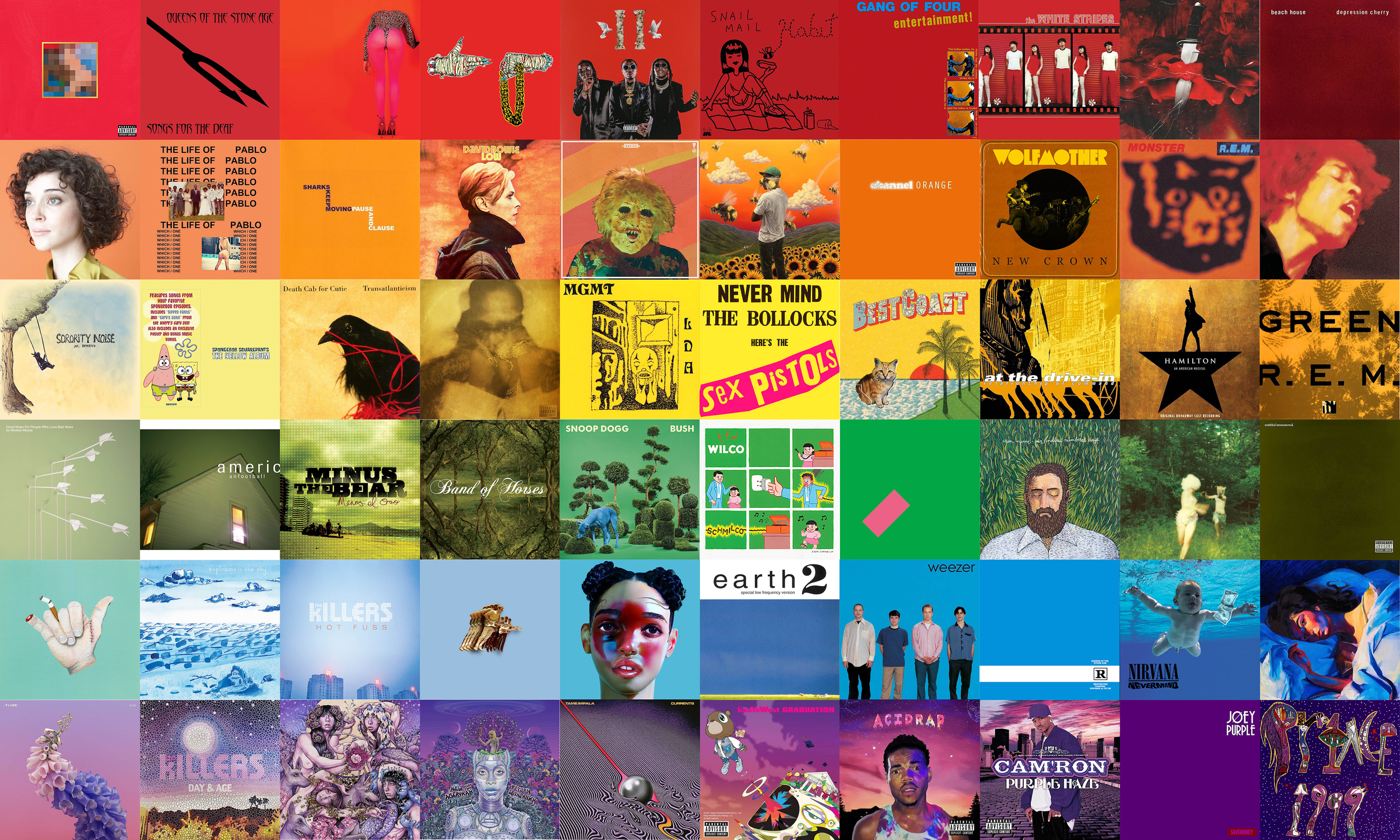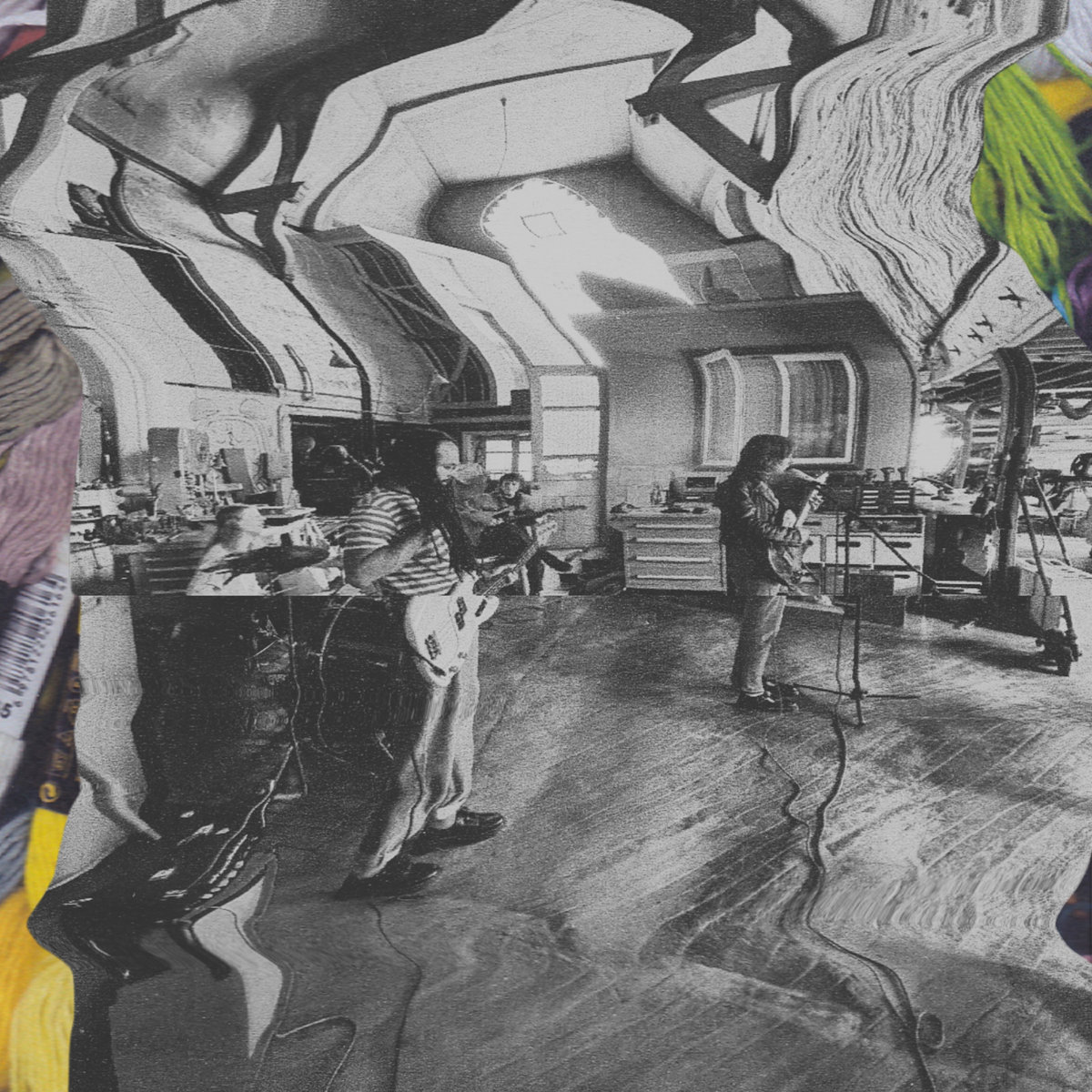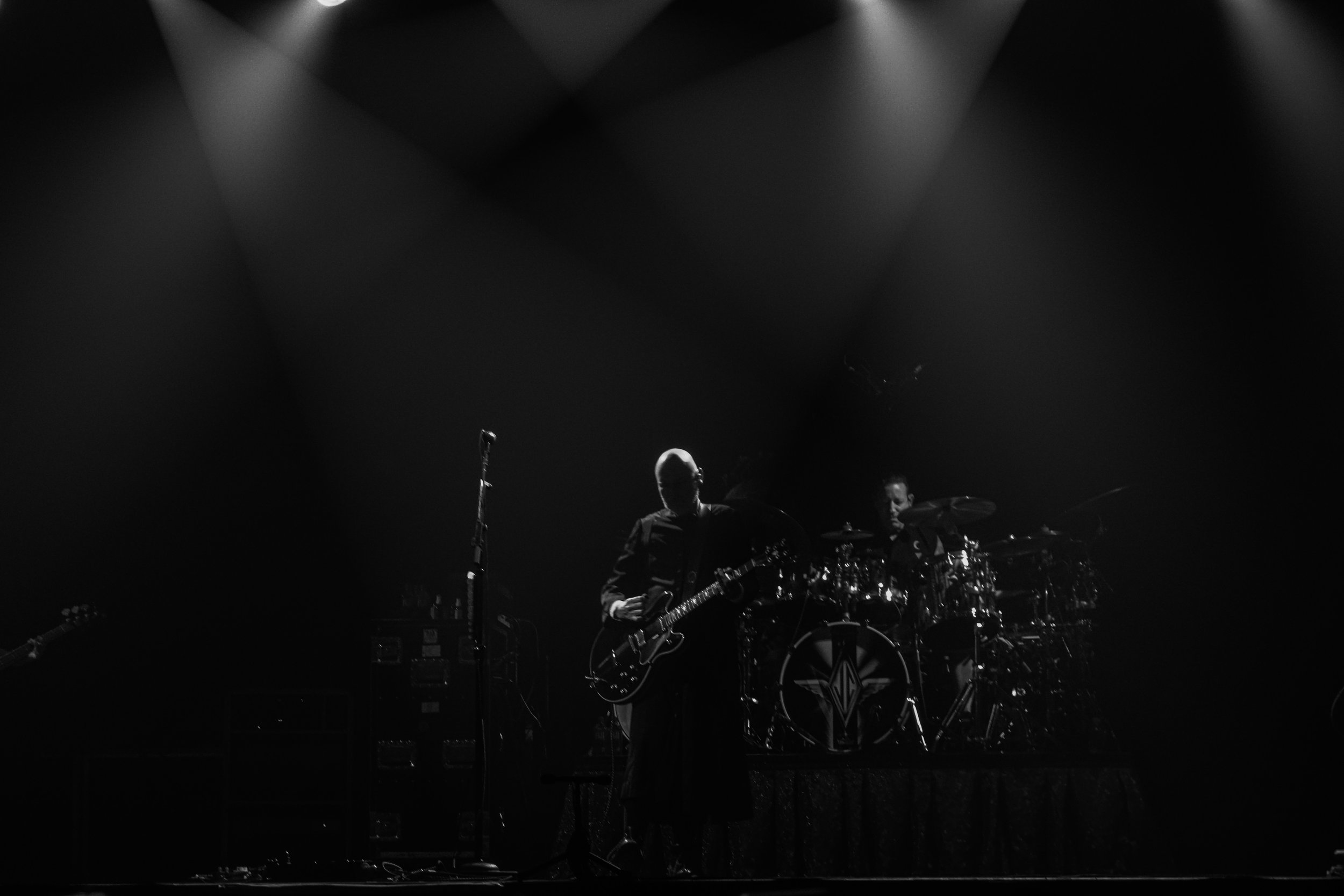Album Art, Visual Translation, and A Pride Week Collage
/Album art is sacred. It is the physical embodiment of a record’s soul, a manifestation of the thoughts, strife, and emotion that went into its creation. Album art is often the one chance an artist has to distill their work into something visual; into one composition that translates the art they’ve made into an entirely different medium. An album’s cover is both the face and synopsis of the music that lies directly behind it.
Even outside of vinyl, the artwork of an album is a vital piece of the overall music experience. As we cram albums onto our phones by the hundreds and platforms like Spotify continue to shrink artwork down to hundred-pixel squares, it’s more important than ever to appreciate the work and artistry that goes into a cover.
In 2018 it’s less important to have a cover that “sells” a potential listener simply because there’s rarely ever a sale in the traditional sense anymore. When everything is one click away, the listener has nothing to lose aside from the three-minute commitment it takes to listen to a song. Sure artists can still use sex or controversy to court discussion and clicks, but now more than ever the cover’s primary job is to translate the senses of the record into something outside of itself. Something recognizable, something beautiful, something with heart.
I’ve long been fascinated with album art, and more recently I’ve found myself looking at my music library abstractly, organizing albums and playlists not by artist, alphabet, or genre, but by color. If records are the physical embodiment of the artist's music, then the color can tell us a lot about the mood and texture of their songs at a glance.
Earlier this year I found myself face to face with a playlist of all pink albums and enjoyed the experience of interacting it so much that I figured why not do that for every color? I sat down, scrolled through my library, and after collecting all of these lovely records into one mood-board-like word document, it only made sense to talk about them here. The more I thought about it, the more it seemed apropos to have this multi-color collage coincide with Pride Week, the most colorful time of the year. So here are 60 (mostly single-color) albums that are largely well-regarded, but also definitively “Taylor-core.”
But wait, that's not all! In addition to these images, I’ve plucked one album from each color and given it a short mini-review. Most of the covers above fall under "classic" territory, but there are also some deeper cuts that I've always wanted to write about on here, even if it's just for a short paragraph.
Owen - I Do Perceive
Husband, father, and noted sad man Mike Kinsella has been making music for a majority of his life. From his work as a teenager in the late-90’s under Cap'n Jazz and American Football to his current solo work as Owen, Kinsella is a prolific artist who seems to be continually overflowing with both good music and raw emotion. While American Football’s self-titled debut is now viewed as an all-time classic in the emo/indie/underground circuit, I posit that I Do Perceive should be brought up with the same level of reverence. Offering a slightly more “adult” counterpoint to his younger self, Perceive is an early-morning exploration of Kinsella’s headspace and the inner-workings of his most intimate relationships. Packed with smart observations, clever topics, and lush instrumentation, this album aches with beauty and honesty.
John Frusciante - PBX Funicular Intaglio Zone
Perhaps best-known for his work with the Red Hot Chilli Peppers during some of their most successful releases, anyone who dives into John Frusciante’s solo records will quickly come to realize what an essential (and artistic) role he played in the group. From his early drugged-out acoustic albums to later-career dissonant electronic phases, Frusciante is a complicated musician with a vast body of intricate work. PBX Funicular Intaglio Zone is a 2012 experimental album that blends electronic, indie, and hip-hop into one schizophrenic explosion of songs that shift rapidly and without warning. It’s unlike anything I’ve ever heard in my life and concrete evidence that Frusciante is a genius with a mind and vision all his own.
The White Stripes - The White Stripes
While they achieved greater success and recognition with later records, The White Stripes’ self-titled debut remains a fantastic release that marks the beginning of an incredibly strong discography. Featuring punchy, thrashy, and messy garage rock, The White Stripes shows us a band in its charming infancy. There are well-crafted choruses and catchy melodies, but at the same time everything is so ragged and distorted that the entire record sounds as if it was recorded in one take. There’s something pure about pre-fame Jack White, and the band’s rough-around-the-edges debut is eternal proof that everyone must start somewhere.
Sharks Keep Moving - Pause and Clause
While it’s only three songs long, Pause and Clause stretches out over a luxurious and lavish 21 minutes. Technically only an EP, this shorter format allowed the band to embrace some semblance of punctuality while simultaneously giving the songs proper time to breathe. Fronted by Minus The Bear’s Jake Snider, Sharks Keep Moving is a reverse-super group whose members went on to form Pretty Girls Make Graves, The Blood Brothers, and These Arms Are Snakes. Pause and Clause, the group's final release, features long-winding and arid songs of love, heartbreak, and disappointment, the centerpiece of which is the 11-minute “Like A River.” One of my favorite songs of all time, “Like A River” tells a tale as old as time of a man, a woman, and a bar. It’s a song that’s not afraid to writhe in its emotions and say exactly what it’s thinking. The lyrics are few and far between, but each line hangs in the air as a poetic observation of the simple beauties in life. The song’s instrumental outro is thrilling and gorgeous, allowing the listener’s mind to reel in their own experiences and project themselves onto the multi-colored soundscape of love and affection.
Sorority Noise - Joy, Departed
After gaining a cult following with 2014’s Forgettable, Sorority Noise returned one year later with their landmark Joy, Departed. Decidedly more serious, mature, and musical, the group’s sophomore effort sees a shift from half-goofy pop-punk into full-blown heart-on-sleeve emo. In retrospect, this release does a fantastic job of acclimating the listener into the band’s more-grounded later work, but still manages to strike a balance between sing-along pop-punk and moody emo that I find enchanting. With poetic lyrics tackling depression, self-harm, and drug addiction, Joy, Departed is far from a “fun” listen, but that doesn’t make it any less enjoyable or important.
Band of Horses - Everything All the Time
Assisted by Seattle’s own Sub-Pop, Everything All The Time was Band of Horses grand unveiling to the world. While “The Funeral” will probably always be their best-known and most widely-recognized song, Everything All The Time is an incredibly-well put-together album featuring personable and charming songs of lackadaisical indie rock with just a tinge of country. Tracks like “The First Song” and “I Go To The Barn Because I Like The” offer laid-back earthy slice of life vignettes that all add up to one of the better debuts of the 2000’s.
Explosions in the Sky - How Strange, Innocence
For an album that was recorded in only four days, How Strange, Innocence is absolutely immaculate. Even when taken in nearly two decades later, Innocence fits squarely into the Explosions In The Sky’s discography and feels like a group that already knew exactly what they wanted. While the band’s later work gradually became quieter and more subtle, their debut is the loudest, most distorted, and most singular thing they’ve ever recorded. Each song explodes with a wall of guitar, drums, and bass that all chug forward relentlessly until crescendoing into sparks of violent beauty. It’s an absolute wonder.
Tame Impala - Currents
After achieving commercial success and near-universal acclaim on his first two records, Tame Impala’s third album found Kevin Parker moving away from Beatles-esque psychedelia and further into electronic progginess. Much like Joy Departed, Currents does a fantastic job of segueing long-time fans into the band’s new sound. Opening track “Let It Happen” begins as a classic Tame Impala psychedelic rock song before glitching out into a prolonged electronic section marked by a dancey explosion of sound and light. Mid-album cuts like “Eventually” all bear the same clean production and showcase the specific type of beauty to be found at the intersection between these two seemingly-disparate genres.
Japandroids - Post-Nothing
Comprised of only two Canadian men, a guitar, and a drum set, Japandroids pack a gigantic, anthemic, and cathartic punch into a small package. While 2012’s Celebration Rock is arguably the rock album of the decade, Post-Nothing will always hold a special place in my heart as that record’s fuzzier, more nostalgic older brother. Beginning with the Thin Lizzy-referencing “The Boys Are Leaving Town” Post-Nothing immediately casts a late-summer spell upon its listener, hurling them into a suspended animation of their own memories. Mid-album cuts like “Heart Sweats” and “Crazy/Forever” find the duo settling into well-crafted melodies and lulling the listener into a sense of trust and inner-peace. Finally, album closer “I Quit Girls” is a soul-rending adult lullaby that builds to a climactic groove which eventually ferries the listener off to the end of the record.






































